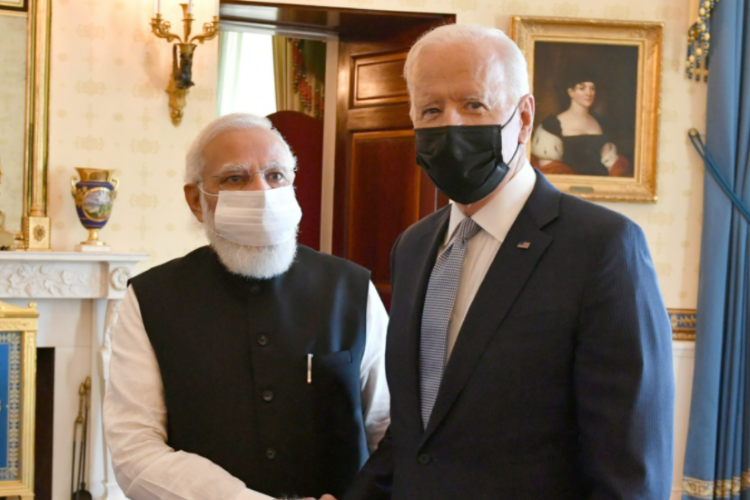
It is difficult to remember a quiet, calm year in US-India ties. The relationship is replete with areas of congruence and conflict, so inflection points are common. This year will likely be no different. There are a few key issues that will impact the commercial and strategic relationship. Successful stewardship from the respective nations’ leaders can determine if these issues cause setbacks or steps forward in the relationship.
CAATSA and US-India ties
After a long wait, India is receiving the first of five units of the Russian-made S-400 Triumf missile defence system. Press reports indicate the first system will be based in Punjab and may be operational by the end of February. That means a decision on whether to pursue a waiver of sanctions under the CAATSA looms ever closer.
There is a relatively high degree of confidence in policy circles that sanctions will be avoided. However, Russia’s continued threats against Ukraine and other European nations underscores the fact that CAATSA is not a bilateral issue between the United States and India. Avoiding this crisis is not a foregone conclusion. The pathway to a waiver is quite narrow, and not everyone agrees India merits a pass. No issue has a greater potential impact on the US-India ties than the CAATSA decision.
READ I Budget 2022 must keep focus on economic revival amid Omicron surge
BJP defending territory in state elections
It sometimes seems that the BJP is a real political juggernaut, especially after winning consecutive single-party majorities in parliamentary elections. However, the reality is more nuanced. The party has not won a single-party majority in a large state election since 2017. Since then, they have lost a few states and clung to power in others through coalitions. At the end of 2021, the party had 21 chief ministers out of the 30 states and territories with legislatures—and six of the seven states headed to elections this year are held by the BJP.
With state re-election rates hovering around 42% in the last five years, the BJP’s control over states could be seriously diminished. This may cause the central government to shift away once again from pushing economic reforms and reorient energy toward short-term political agenda items that often cause new frictions with partners like the United States.

Resumption of key bilateral dialogues
US-India relations got off to a fast start in 2021 under the Biden administration. Notably, the Quad has concretized its agenda considerably. However, on a bilateral basis, the United States and India have not yet held several of the most important bilateral forums. In particular, the first meeting of the 2+2 Ministerial Dialogue under the Biden administration is still awaited. The 2+2 brings together the two countries’ respective foreign and defence ministers.
The US-India CEO Forum is expected to convene—with some new members—to help drive an agenda that will unlock the commercial relationship. The CEO Forum has underperformed in its 17-year existence. But if the companies robustly engage—and the governments are equally responsive to the forum’s ideas—it can become a powerful tool to unravel tricky commercial obstacles.
READ I Data Protection Bill: Sweeping powers to govt worrisome
India and the G20
India will take over the presidency of the G20 on December 1, 2022, from Indonesia. This year the G20 agenda will focus on issues including health, digital transformation, and energy transition. Each of these issues is important to India and will likely be maintained. In taking over the leadership of this body, India will also have the opportunity to further shape the agenda and drive critical issues.
India’s success in areas like financial inclusion, digital tools for governance, and more could become core parts of the agenda. The United States’ deep embrace of the Indian agenda can immeasurably strengthen the relationship.
India’s 175 GW renewable energy target
In 2015 the Modi government announced its intention to reach 175 GW of installed renewable energy by the end of 2022. This goal was lauded by the US administration and other nations. Yet today, less than a year away from the target date, India has barely crossed 100 GW of installed renewable energy. The reasons are manifold: contract disputes with existing developers, a wider economic slowdown, reluctance from state utilities to offer “net metering” to pay consumers that adopt home solar, and more.
Now India has expanded the target, announcing the goal of inducting 500 GW of renewable electricity by 2030 as a key part of its commitments at the recent UN Climate Change Conference of the Parties (COP26) in Glasgow. A big miss on the end of 2022 target will likely raise concerns by the U.S. administration.
Certainly, a range of other issues will arise that will affect U.S.-India relations. But the topics outlined above are significant, concrete, and will occur within defined timelines. Forward-looking leadership on both sides can ensure 2022 stands out as a pivotal year when we continue to bury damaging old mindsets and further push the relationship into a globally significant trajectory.
